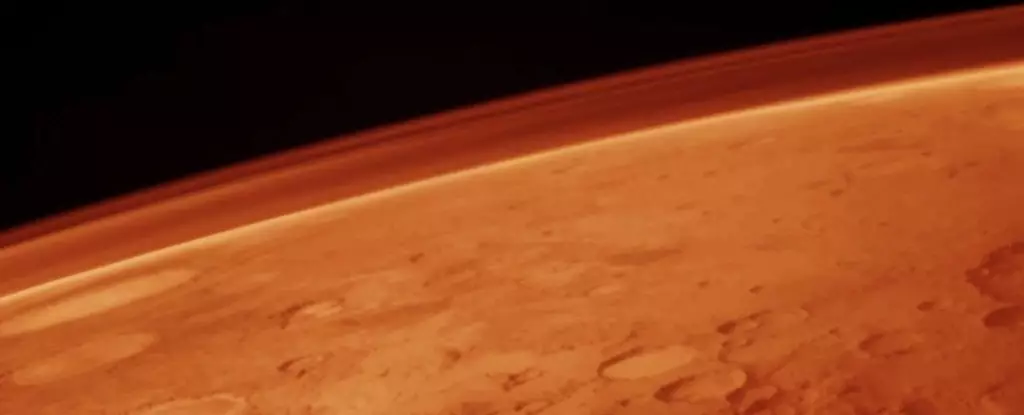Terraforming Mars has captivated the imaginations of scientists and dreamers alike for decades. The prospect of transforming the desolate Red Planet into a new Earth-like haven sparks inspiration for those who envision a future of interplanetary colonization. However, the journey from fantasy to reality is fraught with daunting challenges. Recent insights presented by Leszek Czechowski at the 56th Lunar and Planetary Science Conference highlight the immense physical and energetic hurdles that stand in the way of making this planetary transformation feasible.
The allure of colonizing Mars isn’t merely a pursuit of curiosity; it’s rooted in a deep desire to extend humanity’s reach beyond the confines of our home planet. Works of science fiction—most notably Kim Stanley Robinson’s Mars Trilogy—paint vivid narratives of thriving human civilizations on Mars. Yet, the stark reality involves confronting the intricate complexities of physics and engineering required to initiate such a multi-faceted endeavor.
The Atmospheric Challenge
Central to the concept of terraforming Mars is the need to create and sustain a viable atmosphere. In his paper titled “Energy Problems of Terraforming Mars,” Czechowski digs deep into this crucial issue, illustrating the formidable task of elevating Mars’s atmospheric pressure to levels conducive to human life. Currently, Mars boasts an atmosphere less than 1% the density of Earth’s, leading to severe consequences for any would-be colonizers. As Czechowski points out, exposure to Mars’ current atmospheric conditions would see the water in human bodies boil away almost instantaneously—a less-than-desirable situation for prospective settlers.
Where, then, can we find the resources necessary for this endeavor? The infrequently discussed answer lies within our own solar system. Czechowski proposes sourcing materials from the Kuiper Belt. This distant region is abundant in icy bodies, making it an attractive option for augmenting Mars’s atmosphere. Yet, transporting these materials poses its own unique challenges: the distances involved and the unpredictable nature of the Kuiper Belt’s inhabitants make this an arduous quest.
Engineering the Transformation
Czechowski’s analysis highlights a potential pathway through the gravitational slingshot effect—a navigation technique utilized by space missions that uses the gravity of larger celestial bodies to gain speed. However, this elegant maneuver is not without risks. The tenuous structure of Kuiper Belt objects compromises their integrity during such gravitational assists, often resulting in fragmentation and waste.
Indeed, the engineering feats required extend beyond mere logistics. Czechowski emphasizes the necessity of crafting a propulsion system that does not depend on gravity alone. His vague proposal of a fusion reactor paired with an ion engine raises more questions than answers but underscores the technological sophistication required to manipulate those distant objects. Designing such a system demands not only breakthrough advancements but a reimagining of what we consider feasible in space exploration.
The Time Factor: Delays and Dilemmas
The timeline for any potential terraforming project is both staggering and disheartening. Czechowski’s predictions indicate that even under the most optimistic scenarios, it may take thousands of years to impact Mars’s atmosphere significantly. The comparison of asteroids from the main belt versus those in the Oort Cloud only adds to the complexity. While the Oort Cloud offers a more robust supply of materials, the time required to send these bodies into a favorable trajectory is prohibitive. Conversely, Kuiper Belt objects may offer a somewhat more immediate solution, but their unpredictability still looms as a significant risk.
Moreover, this lengthy journey toward colonization raises another pertinent question: Is humanity prepared for the ethical implications of such grand projects? As we contemplate transforming an entire planet, we must address the moral responsibilities that accompany the endeavor. The lessons learned from Earth’s environmental degradation should inform our approach in safeguarding Mars—or any other celestial body— from similar fates.
The Dream Persists Despite the Challenges
In light of these potential hurdles, the community of Mars enthusiasts continues to harbor dreams of a future where human life flourishes on a transformed Martian landscape. The vision of terraforming Mars might seem like an arduous task fraught with uncertainty, yet it embodies the core of human exploration: an undying yearning to push boundaries and dream even bigger. While it remains undeniably ambitious, such aspirations are exactly what drive progress in science and technology.
As the discussion around Mars colonization unfolds, we find ourselves standing at the precipice of wonderment—a moment both exhilarating and daunting. The challenges highlighted by Czechowski serve not as deterrents but as vital signposts that remind us of the road ahead. Every hurdle is an opportunity for innovation, and every visionary thought plants the seeds for the eventual terraforming of the Red Planet. As we endeavor into the cosmos, we embrace a journey defined not solely by its destination but by the very act of striving for the impossible.


Leave a Reply